g Need to Know g Contents
Getting
Around
Whether you are visiting for a short city break or rural country retreat, discover how best to reach your destination and travel like a pro.
Arriving by Air
Florida’s major airports are Miami, Orlando, Tampa, and Fort Lauderdale. These are all served by national carriers from around the world. In addition there are hundreds of charter flights during the winter months.
Be sure to allow plenty of extra time at the airport, both at arrival and departure, as there are often long lines for passport control and thorough security checks.
For a list of transportation options, approximate journey times, travel costs for traveling between each of Florida’s major airports and cities, see the table opposite.
Train Travel
Amtrak, the national passenger rail company, serves Florida from the east coast. There are three daily services from New York City. This Silver Service takes about 25 hours (with sleepers and meals available), and runs via Washington D.C., down through Jacksonville and Orlando, terminating in Miami or Tampa. The Palmetto serves the same route and offers a business-class service. When traveling overnight, you can choose between the seats of coach class or a cabin. Both options have decent meal services on longer stretches.
If you want to travel by train but have your own car, there is Amtrak’s Auto Train, which runs daily from Lorton in Virginia to Sanford, Florida – 30 miles (48 km) north of Orlando. The journey takes about 18 hours.
Amtrak trains serve only a limited number of towns and cities in Florida. Other than Tampa, the Gulf Coast is linked only by Amtrak buses, known as “Thruway” buses. These run from Winter Haven, near Orlando, to Fort Myers via St. Petersburg and Sarasota, with guaranteed connections with Amtrak rail services.
If you are planning to make more than a couple of trips by train, it is worth considering buying a rail pass, which gives unlimited travel on Amtrak’s network during a set period of time. The pass must be bought before you arrive – either online with Amtrak or through a travel agent that deals with Amtrak. Rail fares do not compete well with those of buses, but trips are more comfortable and relaxing.
Another train service is the south Florida regional Tri-Rail, which links 15 stations between Miami airport and West Palm Beach, including Fort Lauderdale and Boca Raton. Primarily for commuters, these trains can also be useful for tourists.
Amtrak
Tri-Rail
Long-distance Bus Travel
Whether you are traveling from other parts of the country or within Florida, Greyhound buses offer the cheapest way to get around. Some services are “express,” with few stops en route, while others serve a greater number of destinations. A few routes have “flag stops”, where a bus may stop to deposit or collect passengers in places without a bus station. To reserve in advance visit the Greyhound website. You can also go to a Greyhound agent – usually found in a local store or post office – or pay the driver directly.
Passes provide unlimited travel for set periods of time (between four and 60 days), but you may only find them particualrly useful if you have a very full itinerary. Overseas visitors should also note that passes cost less if bought from a Greyhound agent outside the US.
Timetables, information about the different types of ticket, and details of baggage limits are available on the Greyhound website.
Red Coach runs smaller, premium buses – with movies, Wi-Fi Internet, and reclining seats – from Miami to Orlando, Jacksonville, Tampa, Tallahassee, and Gainesville.
Greyhound
Red Coach
Public Transportation
Florida has a good public transportation network, though the vast majority of people do rely on a car to get around. There are various modes of transportation to choose from, including trains and buses, which are often used by visitors who don’t have access to their own vehicle.
Planning Your Journey
The best place to start when planning a journey is the website of the transportation company, such as Amtrak, Tri-Rail, or Metrorail. These provide timetable information and ticket options and prices.
Tickets
Each city provides different public transportation services. Most cities only offer buses, while Miami also has the Metrorail and Metromover. There are often discounted passes for multiple trips as well as reduced rates for children.
For local city buses you should buy tickets from the driver. It is recommended that you pay with the exact fare, as drivers can’t always provide change.
Bus
All of Florida’s major cities have city bus networks. Metrobus runs throughout Miami-Dade County. A single ride costs $2 and transfers are free. A 24-hour unlimited pass costs $5, while a seven-day pass is $26. There is a fee to transfer between bus and train services.
You can survive in Orlando without a car thanks to the Lynx buses. While some residential areas have few or no bus routes, the main tourist areas of downtown Orlando, International Drive (including Universal Studios FloridaTM and SeaWorld®), and Walt Disney World® Reort are quite well served. The free Lymmo service (run by Lynx) travels within downtown Orlando, with rides to and from the Amway Center sports arena and through the dining and nightlife area.
Metrobus
∑ miamidade.gov/global/transportation
Lynx and Lymmo
Metrorail and Metromover
Miami has a few more options for public transportation besides its bus service, making it an easy place to explore without a car.
Metrorail is a 25-mile (40-km) rail line between the northern and southern suburbs of Miami. It provides a useful link between the most popular tourist areas of Coral Gables, Coconut Grove, and the downtown area. Services run daily every 10 minutes or so from 6am until midnight. You can transfer free from Metrorail to the Tri-Rail line in Hialeah, and also to the Metromover system at Government Center and Brickell stations.
Miami’s free Metromover monorail has three loops, connecting the heart of downtown with the Omni entertainment and Brickell financial districts on separate elevated lines. There are 20 stations in total. The Inner Loop provides a quick way to see the downtown area. Cars operate from 5am to midnight daily, arriving every 90 seconds during rush hours and every three minutes during off-peak hours.
Metrorail and Metromover
Taxis
Taxis are a comfortable though expensive way of getting around. Most have a “TAXI” sign on the roof; this is illuminated if the taxi is free. Taxis can be booked by telephone or picked up at taxi ranks. Uber and Lyft also operate in Florida’s towns and cities, and are accessed via cell phone apps.
Uber
∑ uber.com
Lyft
∑ lyft.com
Water Taxi
Water taxis are found in Jacksonville, Tampa, Fort Lauderdale, and the islands around Fort Myers. Routes are generally geared to tourists, and as a result they are fairly limited in scope – linking hotels, restaurants, and stores, for example. However, they are great for sightseeing and often offer special fares.
Driving
Driving in Florida is a delight. Most highways are well-paved, gasoline is relatively inexpensive, and car rental rates are the lowest in the US.
Visitors can survive without a car in big cities like Orlando and Miami, but in general driving is the most efficient way to get around urban areas as well as travelling between the cities.
Many rest areas on interstate highways are covered by 24-hour armed security patrols, so visitors can stop to take breaks on long journeys without feeling concerned for their safety.
Car Rental
Rental car companies are located at airports and other locations in the major towns and cities. It is usually cheaper to rent a vehicle at the airport rather than from a downtown outlet.
All you need to rent a car is your driver’s license, passport, and a credit card. If you present a debit card, you may be required to allow a large deposit to be charged. The minimum age for car rental is 21, but drivers under 25 may need to pay a surcharge.
The state of Florida requires that you carry a copy of the rental agreement in the car. It is recommended to store it safely out of sight.
Make sure your car rental agreement includes Collision Damage Waiver (CDW) – also known as Loss Damage Waiver (LDW) – or you’ll be liable for any damage to the car, even if it was not your fault. Rental agreements include third-party insurance, but this is rarely adequate. It is advisable to buy additional or supplementary Liability Insurance, just in case something unexpected happens.
Most companies add a premium if you want to drop the car off in another city, and all impose high charges for gas: if you return the car with less fuel than it had initially, you will be required to pay the inflated fuel prices charged by the rental agencies. Be aware that the gas stations nearest airports are particularly expensive.
Driving in Florida
You must have a valid driver’s license in order to drive a car in Florida.
While there are many state and federal regulations on the equipment requirements of cars, there are very few that pertain to occupants. Unlike some European countries, there is no requirement to carry warning triangles or safety flares in a car. Drivers and passengers can be fined for not wearing seatbelts, and at certain times of the year state-wide campaigns make violations particularly expensive; heavy fines can be levied at checkpoints on major roads by the Florida Highway Patrol.
If you want to explore off-road trails on a motorbike, be aware that riders younger than 16 years are required to wear eye protection, over-the-ankle boots, and a safety helmet.
Parking
Finding a parking space is rarely a problem at theme parks and other major tourist attractions, shopping malls, or in most downtown districts. Parking near city beaches is more difficult.
You will find small and multi-level parking lots or parking garages in cities, but usually you will have to use parking meters. Feed the meter generously: the fee varies from 50¢ to $2 per hour. Overstay and you risk a fine or the possibility of your car being clamped or towed away.
Be sure to read parking signs carefully. Restrictions may be posted on telephone poles, street lights, or roadside walls. Cars parked within 10 ft (3 m) of a fire hydrant will be towed.
Roads and Tolls
Florida has an excellent road network. The fastest and smoothest routes are the interstate highways, referred to with names such as “I-10” and “I-75”. These usually have at least six lanes with rest areas generally located about 45 minutes’ apart. Interstates form part of the expressway system of roads (sometimes called “freeways”), to which access is permitted only at specified junctions or exits.
The main toll roads are BeachLine Expressway (between Orlando and the Space Coast) and the Florida Turnpike, which runs from I-75 northwest of Orlando, to Florida City. The toll you have to pay is dependent on the distance covered. Tolls can be paid to a collector in a booth or – if you have the correct change and do not need a receipt – dropped into a collecting bin.
Certain sections of the Turnpike near Miami have been converted to an electronic collection system and cash is no longer accepted. Tolls are collected via Sunpass transponders or from having your license plate photographed at each toll booth; your rental car agency can provide information regarding this.
Other routes include the US highways, which are usually, but not always, multi-lane. These are slower than expressways and often less scenic, because they are lined with motels and gas stations. Major highways may be fast at the best of times, but slow down greatly near downtown areas such as the centers of Miami, Orlando, and Jacksonville. This occurs especially during morning and evening rush hours.
Take care when approaching exits, which can be on both sides of the highway; most accidents occur when making left turns.
State Roads and County Roads are smaller but better for casual touring by car. Unpaved routes exist in some of Florida’s more rural areas; note that some car rental companies may not permit you to drive on these.
Breakdown Assistance
If your car breaks down, pull off the road, turn on the emergency flashers, and wait for the police. On expressways you can make use of one of the Motorist Aid Call Boxes. It is advisable to always carry a cell phone in case of emergencies. If you have rented a car, you will find an emergency number on the rental agreement. In the event of a serious breakdown, the rental agency will provide a new vehicle. The American Automobile Association (AAA) will assist its members. Alternatively, call the Florida Highway Patrol (511 on a cell phone) or the free Road Ranger service (*347).
AAA
∑ aaa.com
Rules of the Road
Traffic travels on the right-hand side of the road. Seat belts are compulsory for both drivers and passengers, and children under three must sit in a child seat.
Drinking and driving is illegal. Driving under the influence can result in a fine, having your driver’s license suspended, or imprisonment
Passing is allowed on both sides on any multilane road, including interstate highways. It is illegal to change lanes across a double yellow or double white solid line.
If a school bus stops on a two-way road to drop off or pick up children, traffic traveling in both directions must stop. On a divided highway, only traffic traveling in the same direction need stop.
Need to know Getting Around
At a Glance
Public Transport Costs
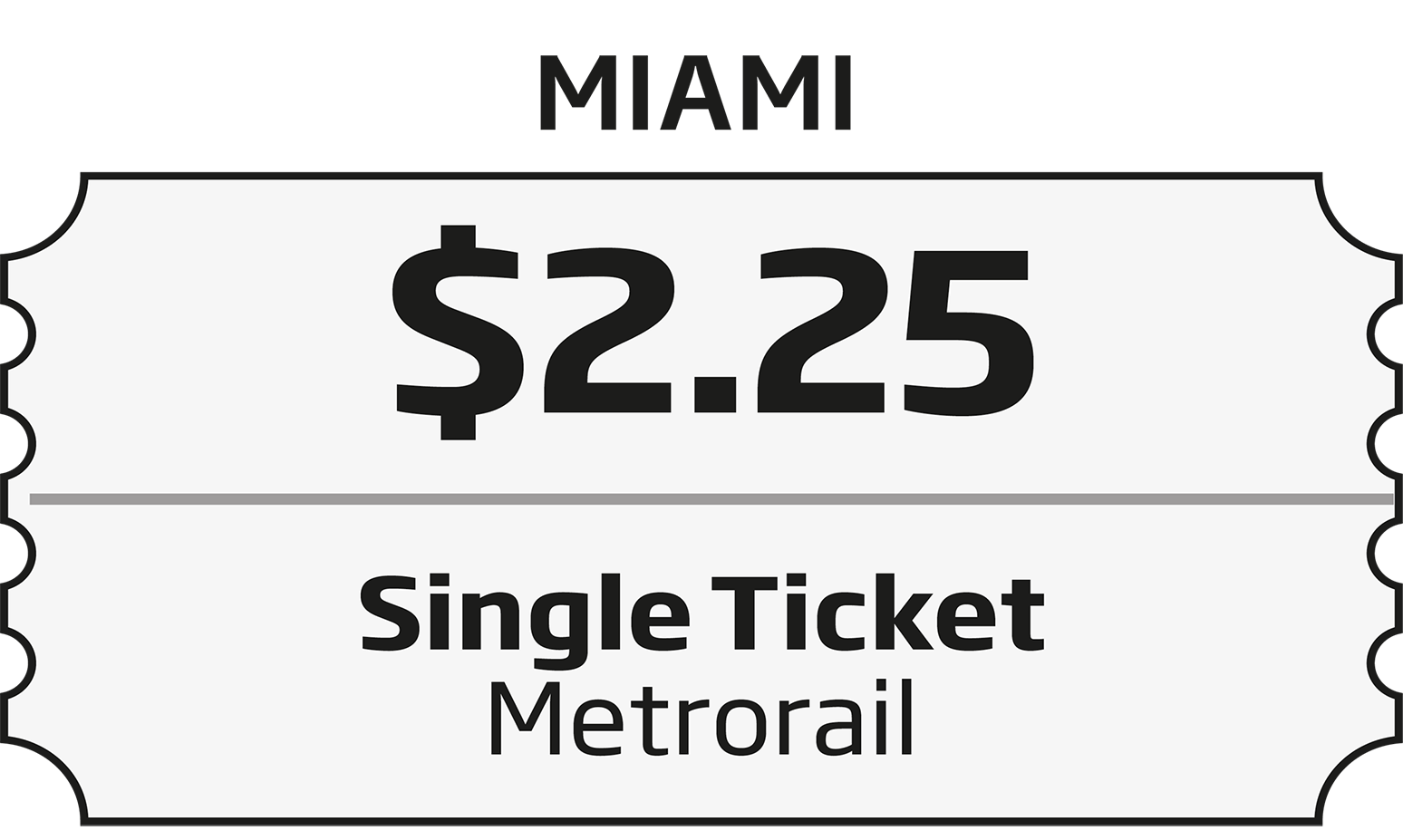
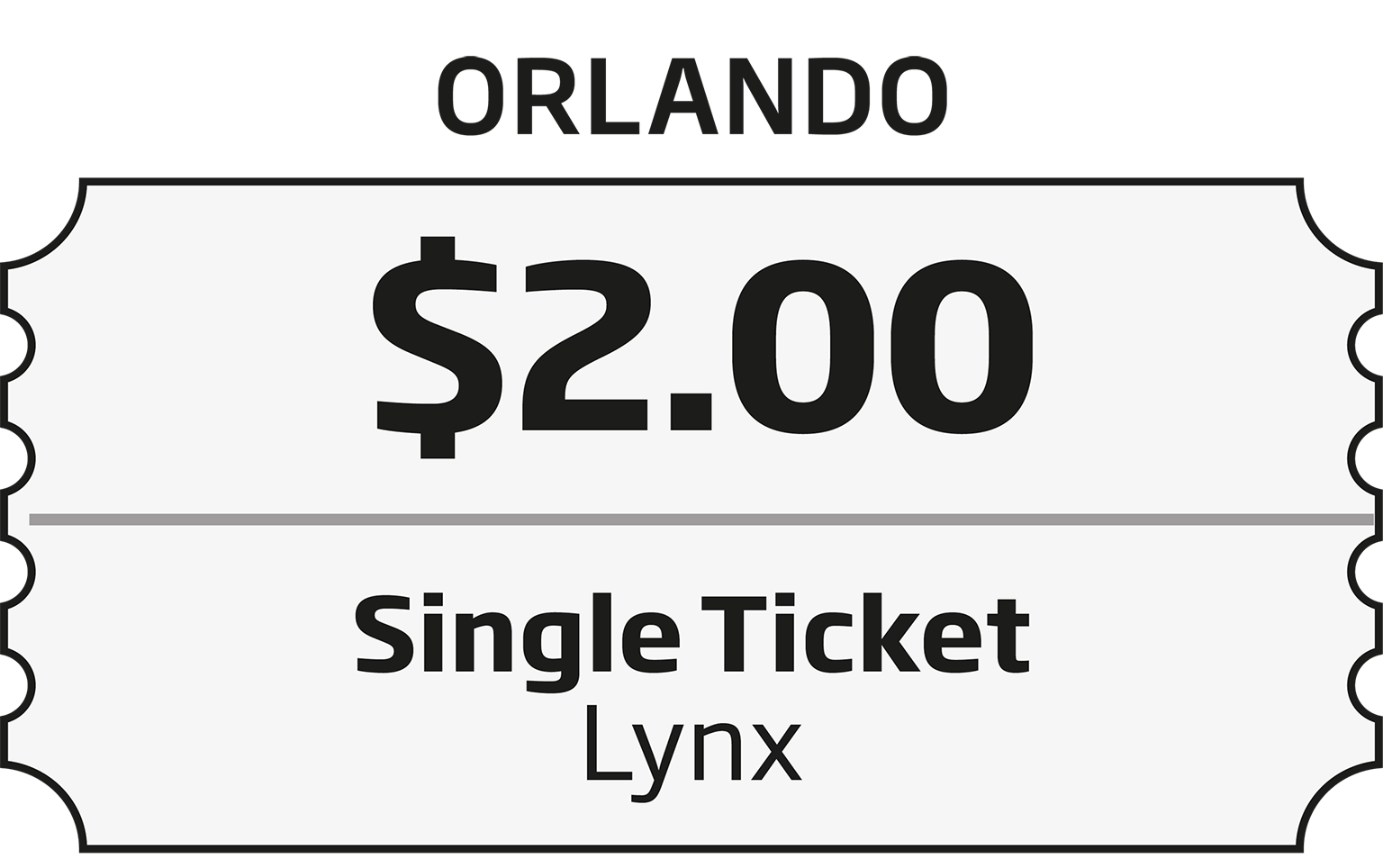

Need to know Getting Around
Speed Limit
Speed limits in the US are set by individual states. The limits in Florida are as follows:
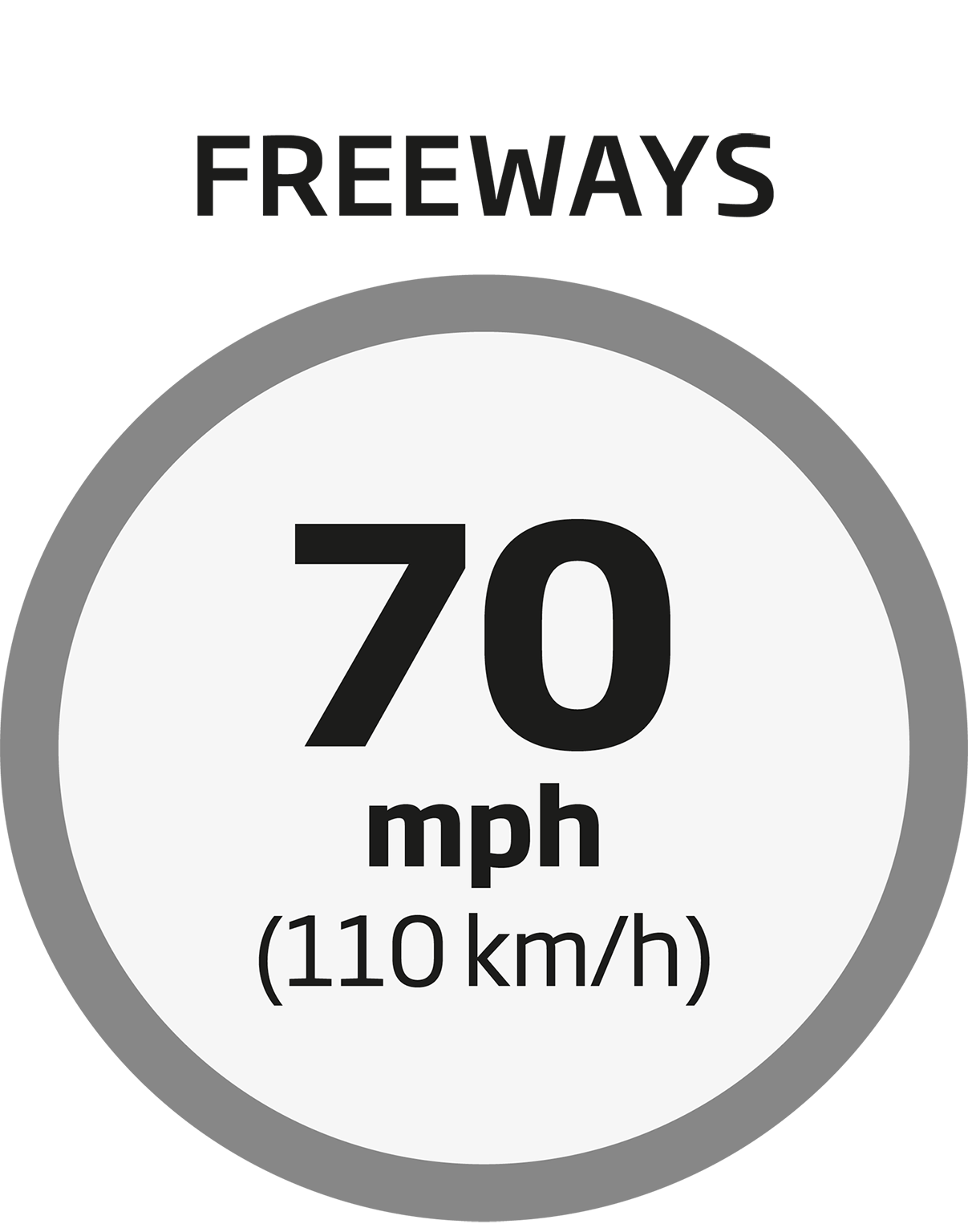
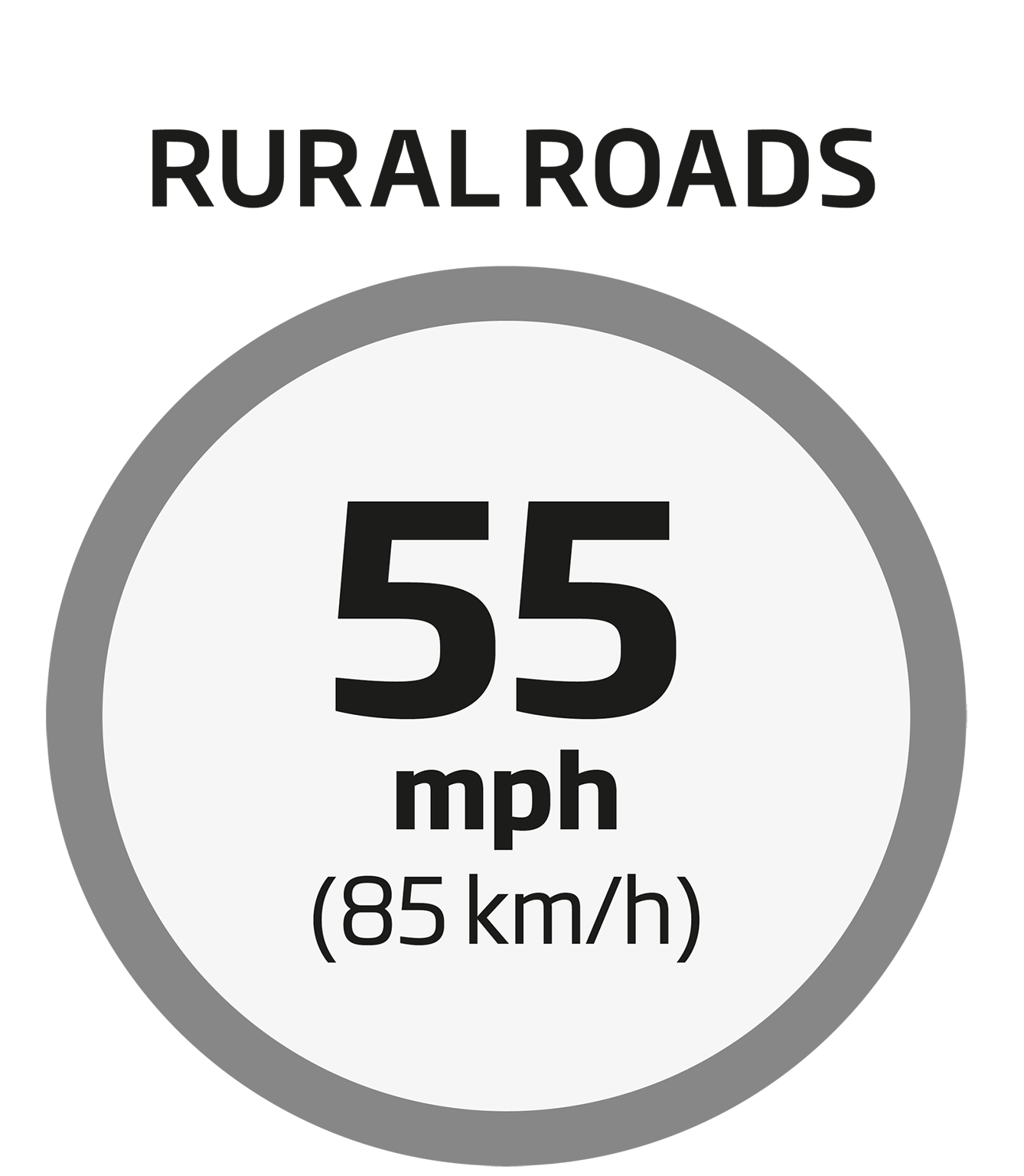
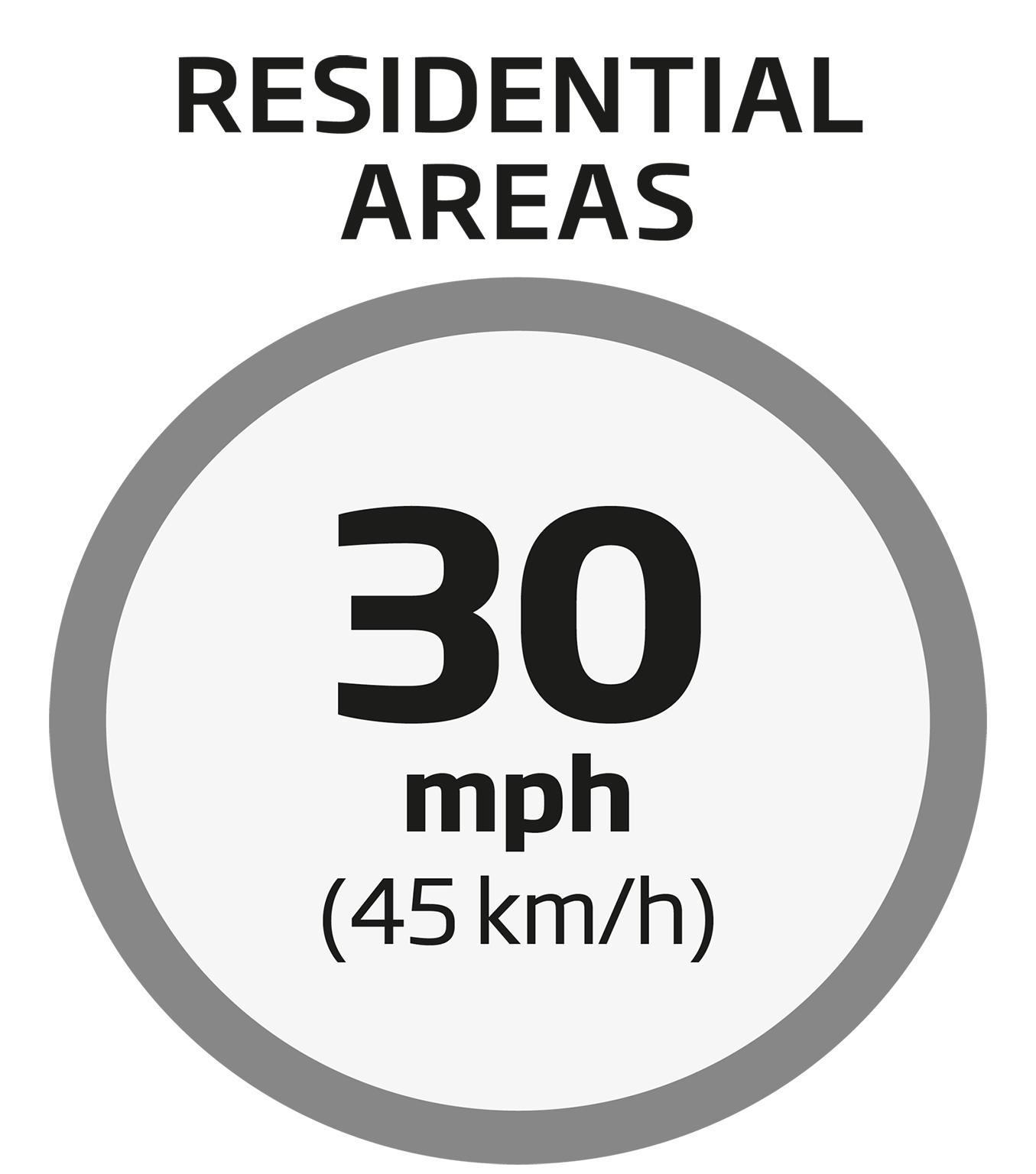
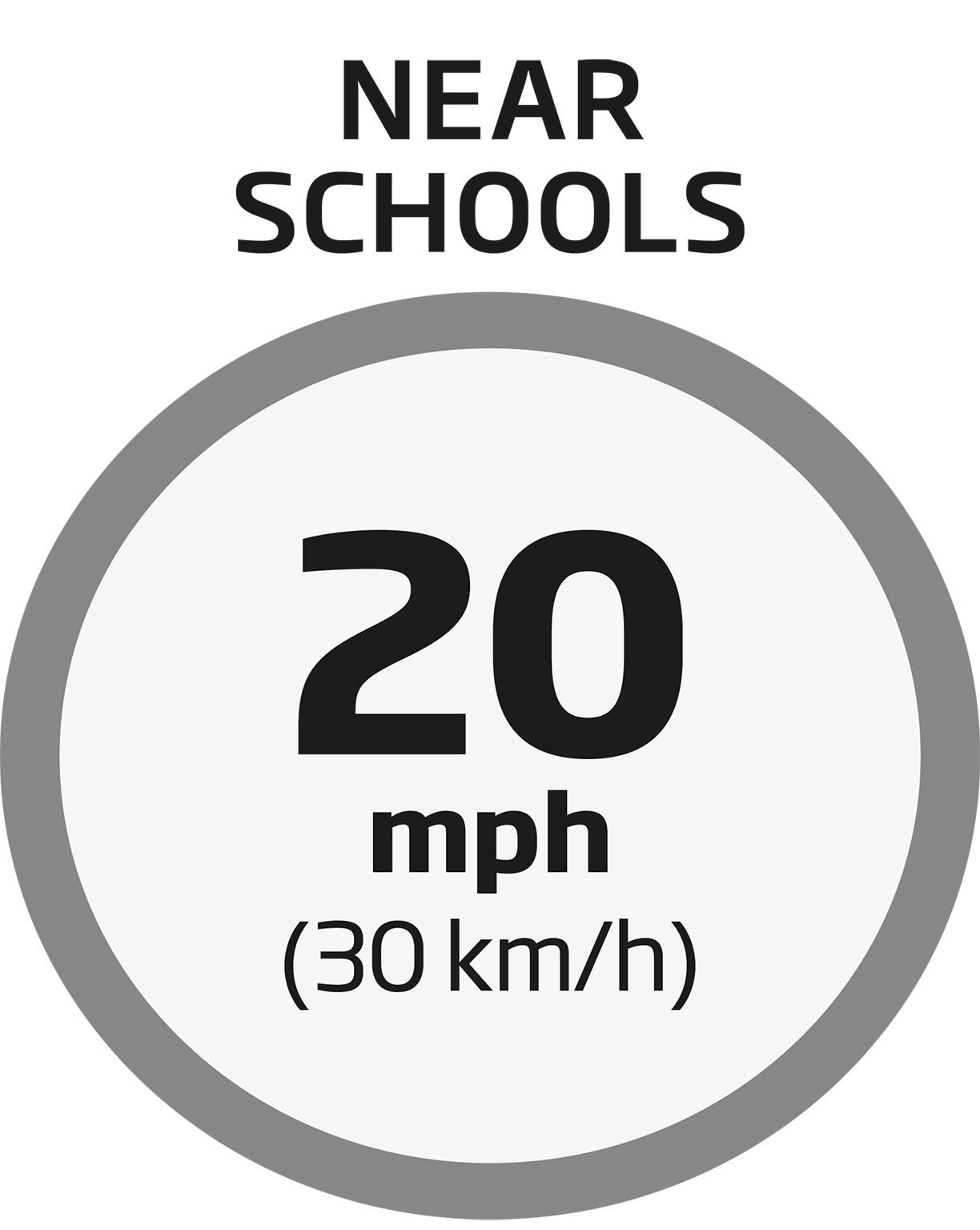
Need to know Getting Around
GETTING TO AND FROM THE AIRPORT
| Airport | Destination | Distance | Taxi Fare | Shuttle Bus Fare |
| Miami | Miami Beach | 10 miles (16 km) | $35 | $2.65 |
| Orlando | Walt Disney World® | 18 miles (28 km) | $52-68 | $23-37 |
| Universal Orlando Resort™ | 15 miles (24 km) | $50 | $21 | |
| Downtown Orlando | 14 miles (22.5 km) | $45 | $32 | |
| Sanford | Walt Disney World® | 40 miles (64 km) | $90–110 | $20–50 |
| Tampa | Downtown Tampa | 9 miles (14 km) | $28 | $35 |
| Fort Lauderdale | Fort Lauderdale | 8 miles (13 km) | $17 | $11 |
| Miami | 30 miles (48 km) | $76 | $25 |
